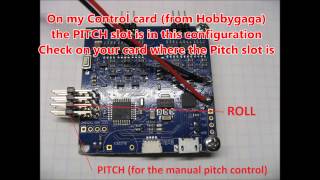Wednesday, 31 December, 2025г.
















Где искать: по сайтам Запорожской области, статьи, видео ролики
пример: покупка автомобиля в Запорожье
Pitch Ability Test - The transition from aural to mental pitch control
The Pitch Ability Test is a free test that focuses on the absolute pitch criterion: accurately sing a named note without a reference tone. Download the Pitch Ability Test for Windows or Macintosh at http://www.pitch-ability-test.com Absolute pitch, often called perfect pitch, seems unachievable and, therefore, is often considered to be of no value. It is true that relative pitch is more important than absolute pitch, and simply knowing that you do not have absolute pitch is not very useful. However, in Wikipedia’s definition of “perfect pitch” one ability stands out: the ability to sing a named note accurately without a reference tone. Since the absence of a reference tone implies that the note is produced “out of thin air,” it is assumed that you only have to test whether a requested pitch is correctly reproduced. However, besides the pitch accuracy, a time dimension is involved. Even possessors of absolute pitch must have heard a reference pitch on previous occasions. Otherwise, they would not be able to assign a name to a pitch. Until now, no specific test for the time dimension has existed. That is why I have developed the Pitch Ability Test. The Pitch Ability Test measures your pitch accuracy and your pitch retention ability. Therefore, it gives you an indicator of where you stand on the road to absolute pitch. The indicator is the time that elapses from the moment you hear a reference tone to the moment when you reproduce the pitch accurately. The scientific setup for measuring your pitch ability is simple: Freely choose four notes that you can sing comfortably. Set the period of time that you want to verify. Then test each note as follows: Have the note played for two seconds. The period of silence subsequently begins, but you could immediately sing the note back for 2 seconds. After that no more sounds are allowed. Five seconds before your chosen period of silence is due to end, you are allowed to break the silence again. You may get your voice into shape by beginning to sing during the preparation phase. When the test time arrives, you must sing the note back for 1 second. Repeat this test for your 4 chosen notes. If you sing all 4 notes back within a precision of 25 cents, you have proved your pitch ability for the chosen period of time. Since the time is unlimited, an upper reference point, at the ability of 4 minutes, is defined as the upper maximum for the test: called Felix’s Pitch Point. Hence, testing the 4 notes should take fewer than 20 minutes. Undertaking a test and, thus, getting feedback for your pitch ability will enable you to train and, therefore, to improve your ability. The Pitch Ability Test is a general test and is not restricted to the similarly named computer program. The concept behind it is independent of a computer. Hence, the test could be done using a stopwatch, with a person with a good ear serving as the tester. The tester does not even need to possess absolute pitch; he or she can evaluate the pitch produced with any correctly pitched reference sound (e.g., an organ, a piano, etc.). Of course, this is not as exact as measuring the difference using a computer. A human tester may not be able to recognize that the deviation of the reproduced pitch is less than 25 cents from the target pitch. However, it is not really relevant for the test that the accuracy is fulfilled to the cent. Nor is it important that the mean is taken over exactly 1 second. If you execute the test seriously, you will get a consistent and reliable result for the pitch ability. Two important things to observe are: 1. that the silent period is silent and 2. that a visual signal (or white noise) is used when the test time arrives. In essence, there should be no pitched reference sound during the silent period. The biggest misperception is that the test results vary from day to day, at least in the beginning. You must first find the point where you consistently and reliably pass the test. Through progressing slowly, you will realize what the critical points are for stabilizing the test results. This will allow you to progress until you find a way to internalize the pitch and can even recall it after a day. Usually, the error entails trying to cheat yourself: Rather than trying to memorize the pitch, you concentrate on keeping it in your mind during the entire silent period. Nothing is wrong with this. It is okay to first learn to keep a pitch in mind through concentration. But, as the time lengthens, you must begin to internalize your state of concentration reliably. That is, you must find a way to move an abstraction of the pitch to your long-term memory. Do not worry! Your brain will use the feedback and help you to perform the task. It is similar to learning a foreign language: it takes time. Whether it is worth your time is another question. But if you truly try to determine what your reliable pitch ability indicator is, you may acquire a liking for the test.
Теги:
Absolute Pitch Test Perfect Pitch Accurate Singing Pitch Test Pitch Ability Pitch Ability Test Pitch Control Mental Pitch Control Feöix's Pitch Point Pitch Take Over Keeping Tonic Perfect Pitch Test Absolute Pitch
Похожие видео
Мой аккаунт


 У вашего броузера проблема в совместимости с HTML5
У вашего броузера проблема в совместимости с HTML5


